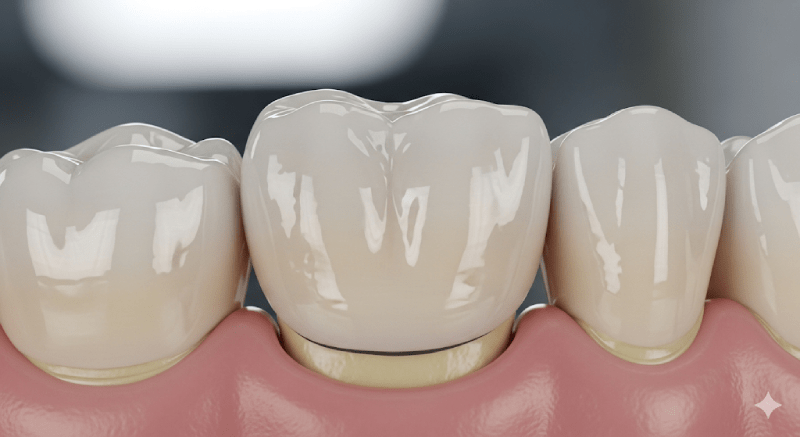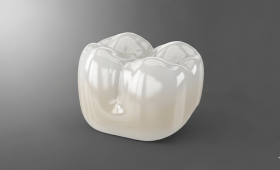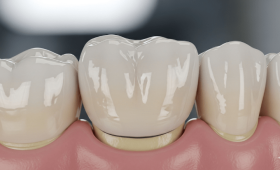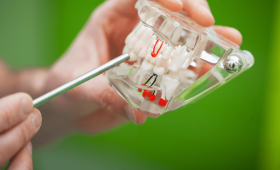This report examines the structural reasons for the high cost of dental crowns and other complex dental treatments in the Netherlands, and how this situation has triggered a health tourism trend where patients prefer countries like Turkey for treatment. The analysis reveals that the costs in the Netherlands are a direct result of specific policy decisions, such as the removal of adult dental care from the basic health insurance package in 2006. This has turned dental care into a luxury for a large segment of the population, creating a vicious cycle where postponed treatments turn into more serious and costly problems.
In contrast, the success of the Turkish dental market is not based solely on low pricing. In addition to the significant economic advantage provided by the depreciation of the Turkish lira against the euro , Turkish clinics have developed an integrated service model that addresses patient concerns, simplifies logistics, and transforms a medical procedure into a relaxing consumer experience. This model offers services such as transportation, accommodation, and native-language guidance in a single package, making the “treatment and holiday” concept a reality.
In conclusion, the pursuit of treatment in Turkey by Dutch patients is more than a simple price comparison; it is a rational response to the financial burden and limited access created by the Dutch system. Turkey has successfully filled this gap by offering an attractive cost-benefit ratio, as well as a comprehensive and innovative value proposition focused on the patient experience.
Section I: Structural Analysis of Dental Crown Costs in the Netherlands
The cost of dental crowns in the Netherlands is much more than a simple matter of material or labor fees. These costs stem from specific structural features of the country’s healthcare system and the dental sector. Pricing is strictly regulated by standard codes and tariffs set by a central authority, the Dutch Healthcare Authority (NZa). While this standardization makes prices transparent, a detailed breakdown of its various components is necessary to understand how the total cost is formed.
Cost Components: A Detailed Breakdown
The total cost of a dental crown encompasses much more than a single “crown” fee. These costs include procedures performed by the dentist and technical work done in the dental technician’s laboratory.
- Procedure and Dentist Fees: The dentist’s own services are charged at standard tariffs set by the NZa. For example, the
R24code used for a crown is listed at 271.58€ as of 2024. In 2025, with a 7.8% increase in oral health treatment prices, this fee is expected to rise to 333.80€. This fee covers not only the placement of the crown but also additional procedures such as caries removal and the creation of a temporary crown. - Technical and Material Costs: The dental crown itself is produced in a laboratory setting by a dental technician. These technical costs are added to the dentist’s fee. The type of material used directly affects this cost. For instance, the technical costs for a ceramic or porcelain crown can range from 220€ to 270€ , while a full zirconium crown can cost 263.00€. The technical cost of a zirconium crown placed on an implant can reach 750€ to 800€. For crowns containing gold or precious metals, there are additional costs determined by the daily market value of the metal.
- Total Estimated Cost: A crown treatment is formed by the combination of all these components. When all additional expenses, such as the dental examination, treatment plan, caries removal, temporary crown, placement of the permanent crown, and technical costs, are considered, the total cost of a crown can reach a high range of 2,500€ to 3,000€. Similarly, the average cost of a treatment combining an implant and a crown in the Netherlands is around 2,800€.

Structural Problems Underlying the High Costs
The main reason for the high cost of dental care in the Netherlands is a political decision made in 2006 to remove adult (18 years and older) dental treatment from the basic health insurance package. This single decision transformed the status of dental care from an essential health service to a personal expense. This has created a serious public health issue, causing more than 1.5 million Dutch citizens to postpone or completely avoid dentist visits due to costs.
Postponing treatment can cause a simple problem to become more complex and, therefore, more costly. A small cavity that could be solved with a simple filling can turn into a root canal treatment costing hundreds of euros if postponed for two or three years. This chain reaction further burdens those with dental problems financially, increasing the need for affordable alternatives.
As a result, patients turn to supplementary dental insurance, but these insurances often offer limited coverage and complex reimbursement policies. Many supplementary insurance packages set annual reimbursement limits (e.g., 250€, 450€, or 1,150€) and cover major treatments like crowns and implants either not at all or at a very low percentage. This means that patients have to pay a large part of the cost out of pocket.
Finally, limitations in the supply of dentists in the Netherlands also contribute to the increase in costs. In the past, around 600 dentists were trained annually, while today this number has dropped to just 244. This scarcity creates a high demand on existing dentists, extends appointment waiting times, and naturally pushes prices up.
The table below provides a more transparent view of the main components and price ranges that make up the cost of a dental crown treatment in the Netherlands:
| Treatment Component | Treatment Code | Cost Range (€) | Source |
| Dentist Fees | |||
| Crown (2024) | R24 | €271,58 | |
| Crown (2025) | R24 | €333,80 | |
| Temporary Crown | R80 | €37,93 | |
| Technical and Material Costs | |||
| Ceramic / Porcelain Crown | R24 | €220 – €270 | |
| Transparent Full Zirconium | – | €263,00 | |
E-max Crown | – | €225,80 | |
| Estimated Total Cost | |||
| General Total Cost | – | €2,500 – €3,000 | |
| Implant + Crown | – | €2,800 |
Section II: The Rise of Medical Tourism in Turkey: Price Advantage and Dynamics
The high costs and access problems in the Netherlands have paved the way for Dutch patients to see Turkey as an attractive alternative. Turkey stands out for the cost advantage it offers in treatments such as dental crowns and implants. However, behind this advantage lies a combination of not only prices but also economic and operational dynamics.
Comparative Analysis of Costs in Turkey
Dental crown prices in Turkey vary depending on the clinic, the quality of the material used, and the scope of the service. When prices are examined in Turkish lira, this range is more clearly visible. According to the 2025 Turkish Dental Association’s reference prices, the price of a zirconium crown, including VAT, ranges from 2,500₺ to 9,500₺ , while for porcelain crowns, this range is 2,500₺ to 8,000₺. Another source lists zirconium veneer prices between 4,500₺ and 15,500₺.
In Euro terms, the prices become extremely attractive for Dutch patients. It is stated that the average cost of a crown in Turkey is between 180€ and 300€. In more comprehensive packages, a porcelain crown can be offered for prices like 400€ to 480€, and a zirconium crown for 890€ to 980€. The difference in this price range is not misleading; it reflects the different tiers of the Turkish market. Lower prices are associated with basic services and materials, while higher prices include extras such as the use of premium Swiss or German implant brands ( Nobel Biocare, Straumann, etc.), advanced technologies, and all-inclusive package services.
Economic and Operational Foundations of the Price Advantage
The price advantage in Turkey stems from several important economic factors:
- Exchange Rate Difference: The most important catalyst for the price advantage in Turkey is the depreciation of the Turkish lira against the euro. The value of the Turkish lira has dropped by approximately 500% in the last five years. This has extraordinarily increased the purchasing power of foreign currencies, especially the euro, in Turkey.
- Low Operating and Labor Costs: The cost of living and operational costs in Turkey are significantly lower than in the Netherlands. Since the training costs for dentists and laboratory operating expenses are more affordable, clinics can operate with much lower overheads compared to the Netherlands. This allows prices to be set at a more accessible level for patients.
The table below provides a comparative overview of the costs of dental crown and implant treatments in the Netherlands and Turkey:
| Procedure | Netherlands Cost (Estimated) | Turkey Cost (Estimated) | Estimated Savings (%) | Source |
| Single Porcelain Crown | €500 – €1,500 | €400 – €480 | %20 – %68 | |
| Single Zirconium Crown | €890 – €980 | €450 – €1,550 | %50 – %70 | |
| Implant + Crown | €2,800 | €1,500 – €2,000 | %28 – %46 |
Section III: The Integration of Treatment and Holiday: A Value Proposition Analysis
The main reason Turkey stands out in health tourism is not just the cost advantage. Its success comes from the ability to transform a medical procedure into a complete consumer experience that addresses all of the patient’s logistical and psychological concerns. This approach promises much more than a simple treatment.
The Holistic Service Model
Most leading Turkish dental clinics offer “all-inclusive” packages for Dutch patients. These packages are designed to minimize the patient’s travel stress. Services offered include:
- Transportation: VIP transfer services are provided between the airport and the hotel, and between the hotel and the clinic. This service provides great comfort, especially for patients after surgery.
- Accommodation: Clinics assist patients with booking hotels that are close by and hygienic, and in some cases, these accommodation expenses are included in the package.
- Guidance: One of the most important services is the presence of guides or consultants who speak the patient’s native language to help them avoid communication problems throughout the process.
This holistic service model represents a level of service rarely found in the Netherlands and transforms a dental treatment from a boring medical appointment into a pleasant travel experience.
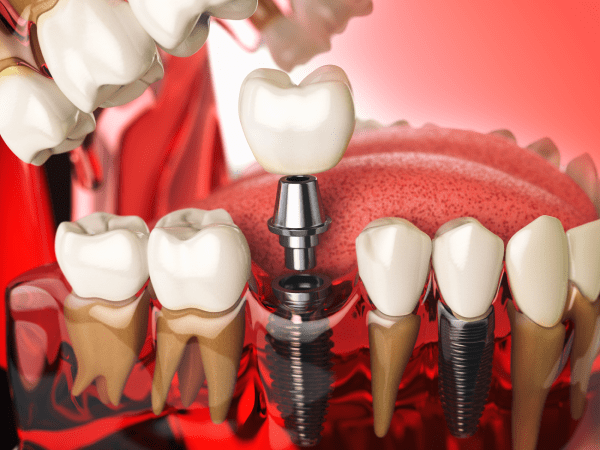
Popular Destinations and Tourist Opportunities
Thanks to its geographical location and rich cultural heritage, Turkey is an ideal destination for combining health tourism with holiday opportunities. The main dental tourism centers are:
- Antalya: Known as the pearl of the Mediterranean, Antalya is a popular option for patients who want to combine their dental treatment with a beach holiday, visits to historical sites, and various nature activities.
- Istanbul: As a blend of history and modernity, Istanbul is home to world-class modern clinics. During their treatment, patients have the opportunity to explore historical and cultural riches such as the Grand Bazaar and Hagia Sophia.
- Izmir: Located in western Turkey, Izmir is another preferred destination for dental tourism, as it offers the opportunity to enjoy both treatment and cultural activities.
Perception of Quality and Technology
Contrary to the “cheap means low quality” perception often expressed in the Netherlands, many clinics in Turkey work with highly educated dentists who have experience with international patients. These clinics use A-class German and Swiss materials, which are also used in the Netherlands. They also have modern laboratories equipped with state-of-the-art devices such as
CAD-CAM, laser treatment, and microscopic diagnostics. This technological infrastructure ensures the highest level of quality is provided without sacrificing cost reduction.
Section IV: A Nuanced Guide to Decision Making
The decision for Dutch patients to seek dental treatment in Turkey should not be based solely on the initial cost. It requires a holistic evaluation that includes long-term value, safety, and aftercare.
What to Consider When Choosing a Clinic
Detailed research before choosing a clinic is of vital importance for the success of the process and patient safety.
- Accreditations and Certifications: Clinics with international certifications such as ISO 9001 should be preferred. These accreditations are an indicator that the clinic adheres to quality management standards.
- Communication and Transparency: The pricing and treatment plan must be completely transparent. Clinics should provide the patient with a written or digital price quote before starting the treatment. It is important to ensure there are no hidden costs.
- Dentist’s Expertise and Experience: Researching the experience, diploma, and areas of specialization (e.g., implantology or aesthetic dentistry) of the dentist who will perform the treatment is crucial for making the right choice.
Process and Logistics Management
Complex treatments, especially crown and implant procedures, cannot be completed in a single visit. These procedures usually require a stay of 5 to 7 days. The support offered by the clinic in organizing travel and accommodation is a great advantage for the patient to use this time efficiently.
Aftercare
Aftercare is one of the most important elements for long-term success. This is one of the biggest concerns for Dutch patients when deciding to get treatment abroad. Clinics that offer examination and follow-up services in the Netherlands (as Dent Perfect does, for example) address this concern. This hybrid model offers the patient the opportunity to benefit from the cost advantage abroad while also easily receiving follow-up services in their own country after the treatment. Such an integration creates a safety net for the patient.
Conclusion and Strategic Recommendations
The high cost of dental crowns in the Netherlands is a direct reflection of the country’s structural and political decisions in the field of dental care services. The removal of adult dental care from the basic insurance coverage and the limitations in the supply of dentists have led to an increase in these costs and caused patients to seek affordable alternatives.
This situation has allowed the dental tourism sector in Turkey to successfully fill the market gap that emerged by combining the exchange rate advantage with a developed service model. Turkish clinics not only offer lower prices but also fundamentally change the patient’s decision-making process by turning a medical treatment into a comfortable and stress-free experience managed from start to finish.
Recommendations for Dutch Patients:
- Do Not Base Your Decision Solely on Price: While the high costs in the Netherlands make treatment in Turkey attractive, do not consider only the price when making your decision. The quality of the treatment, the materials used, and the warranty services offered should be more important.
- Prioritize Transparency: When choosing a clinic, opt for clinics that exhibit a transparent approach, providing you with a clear, written price quote and explaining all the details of the process without hidden costs.
- Evaluate Follow-up Services: Clinics that offer follow-up and aftercare services in the Netherlands provide an important guarantee for potential problems that may arise after the treatment.
Recommendations for Dutch Policymakers and Industry Professionals:
- The rise of health tourism in Turkey is an indication of the inadequacy of the current Dutch system. To increase the accessibility of dental care for a large segment of the population, policies such as including adult dental care in basic health insurance or expanding its coverage should be reviewed. Otherwise, this trend will continue and become a significant public health issue.
